Skype: neodalle-travel
Tel: +86 135 7447 2266
E-mail: sales@visitaroundchina.com

Famous Liquors in Chinese
There are many kinds of liquor in China. But here is a list of some famous varieties of baijiu in China, which you can buy in liquor stores or order in a restaurant.
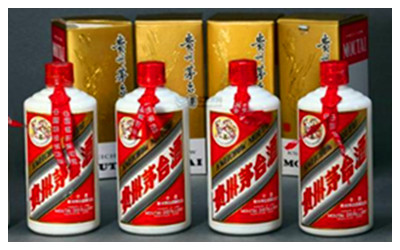
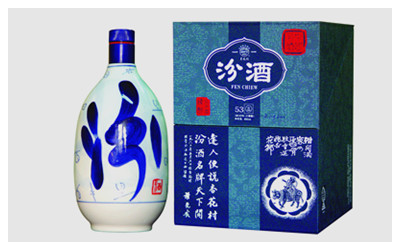
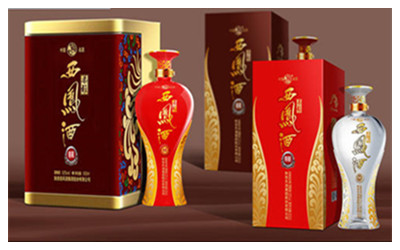
No.3: Xifeng Liquor
Xifeng Liquor (西凤酒 Xi Feng Jiu), also known as Qin Liquor or Liulin Liquor, is produced in Liulin Town, Fengxiang County, Shaanxi Province.With over 3000 years history, Xifeng Wine was originally produced in the Shang Dynasty. And it was very popular to be flourished in the Tang and Song dynasties.
Xifeng wine has the characteristics of clear and transparent, mellow and fragrant. After drinking Xifeng liquor, people do not get drunk on head, do not dry the throat, which make people have a pleasant aftertaste.
No.4: Luzhou Laojiao Wine
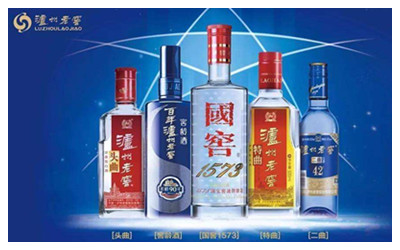 Luzhou Laojiao Liquor (泸州老窖), is produced in Luzhou City of Sichuan Province, Southwest China.With over 2000 years history, Luzhou Laojiao Wine is not only the most local specialty but also one of the top four famous wines in China. Luzhou Laojiao Wine was originated in the Qin & Han Dynasties(221BC-220). Adhering to the traditional Chinese wine-making technology, it was brewed in the first generation of Luzhou Laojiao Daqu Liquor in 1324 during the Yuan Dynasty. Luzhou Laojiao wine has the characteristics of "a strong aroma of the cellar, especially after drinking, sweet and refreshing, long aftertaste". It has always been the most popular Chinese traditional liquor that people like to drink.
Luzhou Laojiao Liquor (泸州老窖), is produced in Luzhou City of Sichuan Province, Southwest China.With over 2000 years history, Luzhou Laojiao Wine is not only the most local specialty but also one of the top four famous wines in China. Luzhou Laojiao Wine was originated in the Qin & Han Dynasties(221BC-220). Adhering to the traditional Chinese wine-making technology, it was brewed in the first generation of Luzhou Laojiao Daqu Liquor in 1324 during the Yuan Dynasty. Luzhou Laojiao wine has the characteristics of "a strong aroma of the cellar, especially after drinking, sweet and refreshing, long aftertaste". It has always been the most popular Chinese traditional liquor that people like to drink.
No.5: Wuliangye Liquor
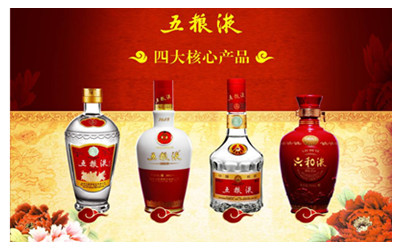 Wuliangye liquor (五粮液酒) ,produced in Yibin City of Sichuan Province, is one of the eight famous wines in China. In Wuliangye Winery, there are relics of the old cellars, which were left over by the Ming Dynasty and have a history of more than 300 years.
Wuliangye liquor (五粮液酒) ,produced in Yibin City of Sichuan Province, is one of the eight famous wines in China. In Wuliangye Winery, there are relics of the old cellars, which were left over by the Ming Dynasty and have a history of more than 300 years.
The brewing materials of Wuliangye are five kinds of grains such as red sorghum, glutinous rice, rice, wheat and corn.The water is taken from the heart of the Minjiang River and the water quality is clear and excellent. Wuliangye liquor has its rich and unique experience in brewing, which fully guarantees its excellent quality and long-term stability, and has won a good reputation among Chinese and foreign consumers.
No.6 : Jiannanchun Liquor
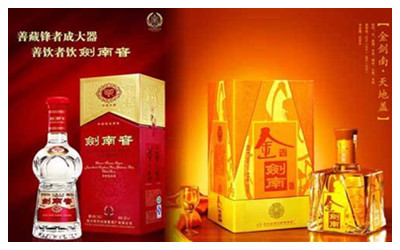 Jiannanchun Liquor(剑南春酒) is produced in Mianzhou City of Sichuan Province. With over 100 years history, It is used sorghum, rice, glutinous rice, corn, and wheat as raw materials, and wheat-made Daqu as saccharification starter. The process is as follows: red lees topping, returning to the sand fermentation, decapitation, steamed cooked bran, low-temperature fermentation, double-round bottom fermentation, etc., the ingredients are reasonable, the operation is fine and brewed.
Jiannanchun Liquor(剑南春酒) is produced in Mianzhou City of Sichuan Province. With over 100 years history, It is used sorghum, rice, glutinous rice, corn, and wheat as raw materials, and wheat-made Daqu as saccharification starter. The process is as follows: red lees topping, returning to the sand fermentation, decapitation, steamed cooked bran, low-temperature fermentation, double-round bottom fermentation, etc., the ingredients are reasonable, the operation is fine and brewed.
Jiannanchun wine is colorless, clear and transparent, rich in aroma, full-bodied wine, mellow and sweet, full-bodied, harmonious aroma, just right, clear and refreshing, long aftertaste. The degree of wine is divided into 28 degrees, 38 degrees, 52 degrees and 60 degrees, which belongs to the Luzhou-flavor Daqu liquor.
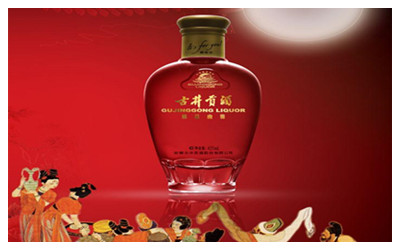 No.7: Gujing Gong Liquor
No.7: Gujing Gong Liquor
Gujing Gongjiu (古井贡酒) is a product of Gujing Distillery in Bozhou City, Anhui Province. Originated from Han Dynasty,it has 2000 years history. And it was regarded as the royal court liquor by Cao Cao, the founder of the Wei Kingdorm in the three-Kingdom Period. Gujing Gongjiu has the characteristics of crystal clear, mellow wine flavor, rich and sweet. The degree of alcohol is divided into 38 degrees, 55 degrees and 60 degrees.
Gujing Gongjiu is the only Chinese famous wine that won a gold award at the 13th International Food Expo in Paris.
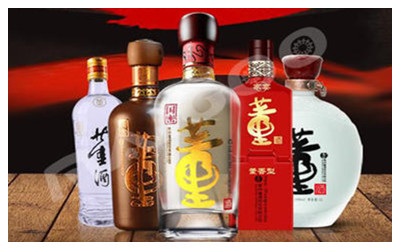 No.8: Dong Liquor
No.8: Dong Liquor
Dong Liquor is produced in Zunyi City of Guizhou Province,which belongs to Daqu's other high-quality flavor liquors. It is well-known at home and abroad for its unique craftsmanship, typical style, and excellent quality, and it is unique in China's famous wines. Dong Jiu is used high-quality sorghum as raw material and underground spring water as brewing water. Dong Liquor contains various trace ingredients such as acids, esters, alcohols, etc. It has a strong and mellow wine flavor, which is loved by the general public.Hence,it is regarded as one of the top eight famous liquors in China.
History of Chinese Liquor
At the time that ancestors of the Chinese people started living in communities along the Yellow River valley, the planting of various kinds of grain laid the foundation for making wines and alcohol.
Taste of of Chinese Liquor
There are a number of popular descriptions in English which comment unfavorably on the taste of baijiu, comparing it with rubbing alcohol or diesel fuel. The author Tim Clissold, who writes frequently on China, noted that he'd "never met anybody, even at the heights of alcoholic derangement, prepared to admit that they actually liked the taste,” and that "after drinking it, most people screw up their faces in an involuntary expression of pain and some even yell out.”
Types of Chinese Liquor
According to its fragrance, Baijiu can be classified into 6 different categories.
"Sauce" fragrance: A highly fragrant distilled liquor of bold character. To the Western palate, sauce fragrance baijiu can be quite challenging to the senses. It has solvent and barnyard aromas, with the former, in combination with the ethanol in the liquor, imparting a sharp ammonia-like note. Its smell has been described as stinky tofu crossed with grappa. To the initiated, it is quite delicious and is considered the perfect complement for fine preserved and pickled foods. This class is also referred to as "Mao xiang," after the best known wine of this class, Maotai.
Heavy/thick fragrance: A class of distilled liquor that is sweet tasting, unctuous in texture, and mellow, with a gentle lasting fragrance contributed by the high levels of esters, primarily ethyl acetate. Most liquors of this class are made using Aspergillus-type starters. One example of this type of liquor is the Five Grains Liquid of Yibin.
Light fragrance: Delicate, dry, and light, leaving a delectable mellow and clean feeling in the mouth. The flavor of this distilled liquor is contributed primarily by ethyl acetate and ethyl lactate. An example of this kind of liquor is Fen jiu of Shanxi.
Rice fragrance: The character of this class of wine is exemplified by baijiu distilled from rice, such as Tri-Flower Liquor of Guilin. This type of wine has long history and is made using Rhizopus spp. type starters ("Small starter"). It has a clean feeling in the mouth and is slightly aromatic aroma, dominated by ethyl lactate with lesser flavor contributions by ethyl acetate.
Honey fragrance: A class of distilled liquor with the fragrance of honey. Liquors of this class are subtle in flavor and sweet in taste.
Layered fragrance: A class of distilled liquors that contain the characteristics of “Sauce,” Heavy, and Light Fragrance distilled liquors. As such, liquors of this class vary widely in their aroma, feeling in the mouth, and dryness. An example of this type of liquor is Xifeng Jiu, produced in Fengxiang County of Shaanxi.
 Ask Questions ?
Ask Questions ?